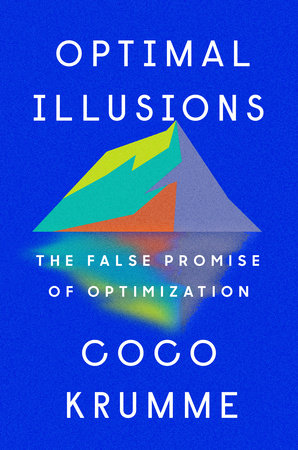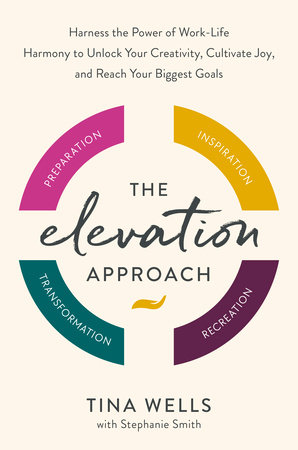We’ve Got You Covered by Amy Finkelstein and Liran Einav is about the intricate and often misunderstood world of health insurance and economics. It delves into how insurance markets operate, the role of government, and the impact on consumers.
People often think that health insurance is solely about getting access to healthcare at a lower cost. However, Finkelstein and Einav challenge this notion by showing that it’s also a complex balance of risk, economics, and human behavior. That means understanding health insurance requires more than just a grasp of medical needs; it involves economics, policy implications, and the psychology of decision-making.
In this summary, you’ll learn about the mechanisms behind health insurance markets, the trade-offs between cost and coverage, and the impact of policy changes. The book provides insights into how to navigate these markets more effectively, both as consumers and policymakers.
I recommend We’ve Got You Covered for anyone interested in healthcare, economics, or public policy. It’s a must-read for professionals in the insurance industry, policymakers, and anyone who wants to understand the complexities behind the health insurance they have or are considering. This book offers a unique lens through which we can view a vital component of our lives, making it an essential read for those looking to make informed decisions in this area.
Four Key Ideas in We’ve Got You Covered
The book discusses these four key ideas:
1. The Economics of Health Insurance: Explains how health insurance is not just a simple transaction for healthcare services but a complex economic arrangement involving risk assessment, cost-sharing, and market dynamics.
2. Government’s Role in Health Insurance: Investigates the impact of government policies and regulations on health insurance markets, highlighting how these interventions can shape costs, coverage, and consumer choice.
3. Consumer Behavior in Insurance Markets: Delves into how individuals make decisions regarding health insurance, factoring in psychology, perceived risk, and economic constraints.
4. Balancing Cost and Coverage: Discusses the trade-offs between comprehensive coverage and affordable premiums, and how this balance affects both individuals and the broader healthcare system.
Idea #1: The Economics of Health Insurance
The concept of the economics of health insurance is central to understanding how health insurance systems function. It’s important because it transcends the basic idea of insurance as a means for accessing healthcare at a lower cost. Instead, it delves into the complexities of risk management, cost distribution, and the functioning of insurance markets. This understanding is crucial for both consumers and policymakers to make informed decisions.
A detailed example from the book highlights how insurance companies balance risk and premiums. Insurance providers use a variety of data and statistical models to assess the risk of insuring individuals and groups. This risk assessment directly impacts the premiums that consumers pay. High-risk individuals might face higher premiums, whereas low-risk groups benefit from lower costs. This dynamic is a fundamental principle in the economics of health insurance, illustrating the delicate balance between risk, cost, and coverage.
“Understanding the economics of health insurance requires more than just a grasp of medical needs; it involves dissecting the layers of economics, policy, and human behavior.” —Amy Finkelstein and Liran Einav, We’ve Got You Covered
Related to this idea are several key points:
- Risk Assessment and Premium Setting
Insurance companies use complex algorithms to assess risk. This process involves analyzing medical histories, lifestyle choices, and other factors. For example, a smoker might be classified as a higher risk compared to a non-smoker, resulting in higher premiums.A real-world example is the use of wearables in health insurance. Some companies offer discounts for customers who share data from fitness trackers. This data helps insurers more accurately assess an individual’s health risk.
“Risk assessment in insurance is not just about understanding the likelihood of events; it’s about understanding people.” —Amy Finkelstein and Liran Einav, We’ve Got You Covered
- Cost-Sharing Mechanisms
Cost-sharing, including deductibles, copayments, and coinsurance, is a crucial aspect. It’s not just about sharing costs; it’s about incentivizing consumers to make more thoughtful healthcare choices.An example from the book is the analysis of high-deductible health plans. These plans often result in lower monthly premiums but higher out-of-pocket costs, influencing consumer behavior towards healthcare services.
“Cost-sharing mechanisms are designed to balance the financial burden and promote responsible usage of healthcare services.” —Amy Finkelstein and Liran Einav, We’ve Got You Covered
- Market Dynamics and Insurance
The dynamics of the insurance market, including competition among insurers and the role of government regulations, play a significant role in shaping the economics of health insurance.For instance, the introduction of a new insurance policy in a competitive market can lead to changes in premium prices and coverage options across the board, as detailed in the book.
“The interplay of market forces and insurance policies creates a dynamic environment that constantly shapes the landscape of health insurance.” —Amy Finkelstein and Liran Einav, We’ve Got You Covered
Understanding these aspects provides a more holistic view of the health insurance system, highlighting its complexity and the intricate balance of factors influencing it.
Idea #2: Government’s Role in Health Insurance
Understanding the government’s role in health insurance is crucial for grasping the broader context of how health insurance systems are shaped and function. This aspect is important because governmental policies and regulations can significantly influence market dynamics, pricing, coverage options, and the overall accessibility of healthcare.
A detailed example from “We’ve Got You Covered” involves the analysis of Medicare and Medicaid in the United States. These programs, established by the government, provide health coverage to specific groups: the elderly and low-income individuals, respectively. The authors discuss how these programs not only offer necessary health services to vulnerable populations but also influence private insurance markets through their pricing and coverage decisions.
“Government interventions in health insurance markets can have far-reaching effects, both intended and unintended, on the overall healthcare system.” —Amy Finkelstein and Liran Einav, We’ve Got You Covered
Key points related to this idea include:
- Policy Impact on Insurance Markets
Government policies can drastically alter the landscape of health insurance markets. This includes decisions about subsidies, regulations on insurance companies, and public health initiatives.For example, the Affordable Care Act (ACA) in the United States significantly changed the health insurance landscape by introducing individual mandates, subsidies for low-income individuals, and regulations on insurance providers.
“Policymaking in health insurance is a delicate balancing act that involves multiple stakeholders and complex dynamics.” —Amy Finkelstein and Liran Einav, We’ve Got You Covered
- Public vs. Private Insurance Systems
The relationship between public and private insurance systems is a critical aspect of government involvement in health insurance. This relationship can define the accessibility and quality of healthcare services.An example discussed in the book is how private insurers often base their coverage options and pricing on standards and benchmarks set by public programs like Medicare.
“The interplay between public and private insurance systems is a key determinant of the health insurance landscape.” —Amy Finkelstein and Liran Einav, We’ve Got You Covered
- Regulation of Insurance Practices
Governments play a crucial role in regulating insurance practices to ensure fairness, transparency, and protection for consumers. This includes setting standards for coverage, pricing, and the handling of pre-existing conditions.The book discusses how regulations can prevent discriminatory practices in insurance, ensuring that people with pre-existing health conditions are not unfairly excluded from coverage or charged exorbitant rates.
“Effective regulation is essential to maintain a fair and equitable health insurance system.” —Amy Finkelstein and Liran Einav, We’ve Got You Covered
Understanding the government’s role in health insurance helps in comprehending the complexities of healthcare systems and the delicate balance between public interests and market dynamics.
Idea #3: Consumer Behavior in Insurance Markets
The exploration of consumer behavior in insurance markets is a key idea in “We’ve Got You Covered.” This topic is crucial because the decisions consumers make about health insurance are influenced by a variety of factors, including psychological biases, understanding of risk, and economic constraints. These choices, in turn, have significant implications for the broader health insurance market and public health policy.
A detailed example from the book focuses on the concept of ‘choice overload.’ When presented with too many insurance options, consumers often struggle to make optimal decisions. The authors illustrate this with cases where consumers choose plans that are not cost-effective for their particular health needs, either paying too much for unnecessary coverage or opting for lower premiums but with higher out-of-pocket costs that are not suitable for their medical situations.
“In the complex world of health insurance, consumer decisions are shaped by more than just price and coverage. Psychological factors and understanding of risk also play critical roles.” —Amy Finkelstein and Liran Einav, We’ve Got You Covered
Key points related to this idea include:
- Psychological Biases in Decision Making
Psychological biases significantly impact how consumers approach insurance decisions. For example, many people exhibit a status quo bias, preferring to stick with their current plan even if a better option is available.An example from the book shows how during open enrollment periods, a significant number of individuals choose to stay with their existing plan without reviewing new options, potentially missing out on more suitable coverage or cost savings.
“Psychological biases often lead consumers away from optimal health insurance decisions.” —Amy Finkelstein and Liran Einav, We’ve Got You Covered
- Risk Perception and Insurance Choices
How consumers perceive and understand risk is a key factor in their health insurance decisions. Many tend to underestimate the likelihood of needing significant medical care, leading to choices that might not be in their best interest.The book discusses scenarios where individuals opt for high-deductible plans without considering the potential risk of significant healthcare expenses, influenced by their low perception of personal health risks.
“Misjudging risk can lead to insurance choices that are misaligned with an individual’s actual healthcare needs.” —Amy Finkelstein and Liran Einav, We’ve Got You Covered
- Economic Constraints and Plan Selection
Economic factors, such as income and affordability, play a crucial role in health insurance decisions. Consumers with limited financial resources might prioritize lower premiums over comprehensive coverage.“We’ve Got You Covered” provides an example of low-income individuals selecting plans with lower premiums but higher out-of-pocket costs, which can be financially burdensome in the event of unexpected medical expenses.
“Economic constraints can compel consumers to make health insurance choices that might not be ideal in the long term.” —Amy Finkelstein and Liran Einav, We’ve Got You Covered
Understanding these aspects of consumer behavior is vital for designing more effective health insurance products and policies that better cater to the needs and behaviors of the consumer population.
Idea #4: Balancing Cost and Coverage
The balance between cost and coverage in health insurance is a fundamental concept explored in “We’ve Got You Covered.” This idea is pivotal because it directly affects both individual consumers and the healthcare system as a whole. Balancing cost and coverage involves making trade-offs between how much consumers pay for their insurance premiums and the extent of the healthcare services covered by their insurance plans.
A key example in the book is the analysis of high-deductible health plans (HDHPs). These plans offer lower monthly premiums but require higher out-of-pocket costs for medical services until the deductible is met. The authors discuss how HDHPs can be both beneficial and risky: beneficial because they lower monthly costs, but risky because they can lead to significant out-of-pocket expenses in the event of unexpected medical needs.
“The interplay between insurance premiums and coverage levels is a dance of financial and health security.” —Amy Finkelstein and Liran Einav, We’ve Got You Covered
Several points related to this balance include:
- Premium Costs vs. Out-of-Pocket Expenses
Choosing between lower premiums and higher out-of-pocket costs is a common dilemma for insurance consumers. This decision often depends on the individual’s financial situation and expected healthcare needs.For example, a young, healthy individual might opt for a plan with lower premiums and higher deductibles, betting that they won’t need extensive medical care. In contrast, someone with ongoing health issues might choose a plan with higher premiums but more comprehensive coverage.
“Navigating the trade-off between premium costs and out-of-pocket expenses is a critical aspect of selecting the right health insurance plan.” —Amy Finkelstein and Liran Einav, We’ve Got You Covered
- Risk Management in Health Insurance
Insurance is fundamentally about managing risk. Consumers must weigh the risk of incurring high medical costs against the certainty of paying insurance premiums.The book provides insights into how consumers can evaluate their personal health risks and financial ability to pay for potential medical expenses, helping them to choose a plan that aligns with their risk tolerance.
“Effective risk management is at the heart of making informed health insurance decisions.” —Amy Finkelstein and Liran Einav, We’ve Got You Covered
- Impact of Coverage Limits on Healthcare Access
Coverage limits, which dictate what services are paid for by the insurance and to what extent, can significantly impact access to healthcare. Plans with more restrictions might offer lower premiums but can limit the healthcare options available to the consumer.An example discussed in the book is the case of plans that exclude certain expensive treatments or medications, potentially leaving consumers without access to necessary healthcare services.
“Coverage limits in health insurance plans can have profound implications on the accessibility and quality of healthcare.” —Amy Finkelstein and Liran Einav, We’ve Got You Covered
Understanding the balance between cost and coverage is essential for making informed health insurance choices and for policymakers designing health insurance systems that meet the needs of diverse populations.
Action Plan
To implement the learnings from “We’ve Got You Covered,” consider the following action plan:
- Understand Your Health Insurance Needs:
- Assess your current and potential future health needs.
- Factor in family history, lifestyle, and any existing conditions.
- Educate Yourself on Health Insurance Terms:
- Learn about premiums, deductibles, copayments, and coinsurance.
- Understand the difference between HMO, PPO, EPO, and POS plans.
- Evaluate Risk vs. Cost:
- Consider how much risk you are willing to take versus the cost you can afford.
- Decide if a higher deductible for lower premiums is suitable for your situation.
- Review Government Policies and Their Impact:
- Stay informed about current and upcoming healthcare policies.
- Understand how these policies can affect your insurance choices and costs.
- Analyze Insurance Market Trends:
- Keep an eye on market trends that can affect insurance prices and options.
- Look for new types of plans or changes in existing ones.
- Make Informed Decisions:
- Compare different health insurance plans carefully.
- Don’t just focus on the premium; consider the overall cost and coverage.
- Plan for Long-Term Health Care Needs:
- Think about long-term care insurance, especially if you are older.
- Consider the potential need for extensive healthcare services in the future.
- Regularly Review and Adjust Your Plan:
- Reassess your health insurance plan annually.
- Make changes as your health needs or financial situation evolves.
- Consider Community Insurance Plans
- Consider an alternative business model for insurance that aims for the benefit of the community
- Does not operate with a commercial intent
Implementing these steps can help you make more informed decisions about your health insurance, ensuring that you have the coverage you need at a cost you can manage.
Conclusions
That was the summary of We’ve Got You Covered by Amy Finkelstein and Liran Einav. From this book, readers gain a comprehensive understanding of the health insurance market, including its economic aspects, the role of government, consumer behavior, and the balance between cost and coverage. The action plan provided guides readers on how to apply these insights to make informed decisions about their health insurance needs. Expect a transformation in your approach to choosing and understanding health insurance plans.
About Amy Finkelstein and Liran Einav
Amy Finkelstein and Liran Einav are renowned economists specializing in health insurance markets and healthcare policy. Their achievements include extensive research and publications in the field of economics, contributing significantly to the understanding of health insurance and its impact on society and individuals.
Similar books to We’ve Got You Covered
If you enjoyed reading We’ve Got You Covered, you will enjoy these similar books:
- The Healing of America by T.R. Reid: Provides a global perspective on healthcare, comparing different systems worldwide and their effectiveness.
- An American Sickness by Elisabeth Rosenthal: A detailed critique of the American healthcare system, examining its complexities and challenges.
- Reinventing American Health Care by Ezekiel Emanuel: Explores the future of healthcare in America, focusing on the impact of the Affordable Care Act and potential reforms.







